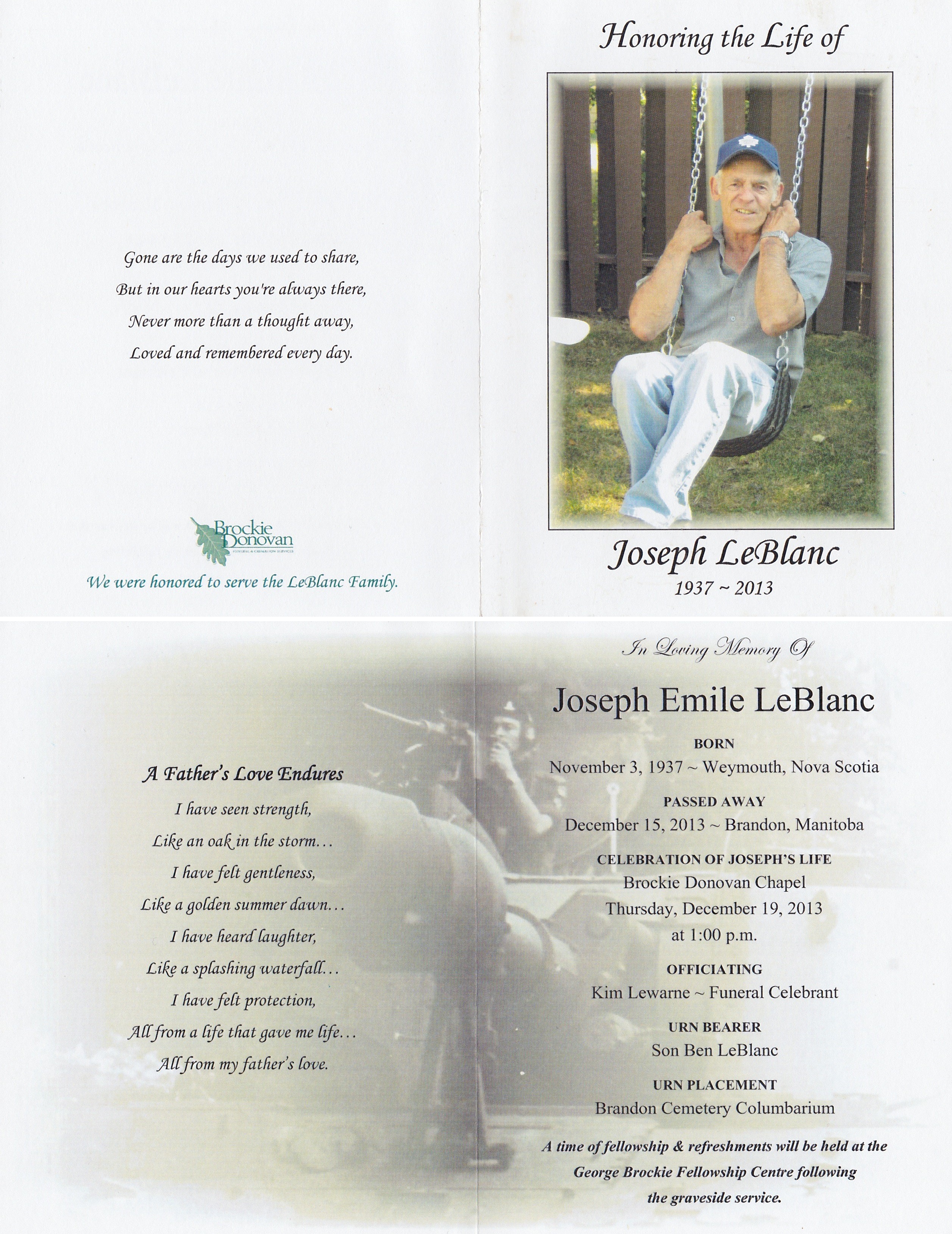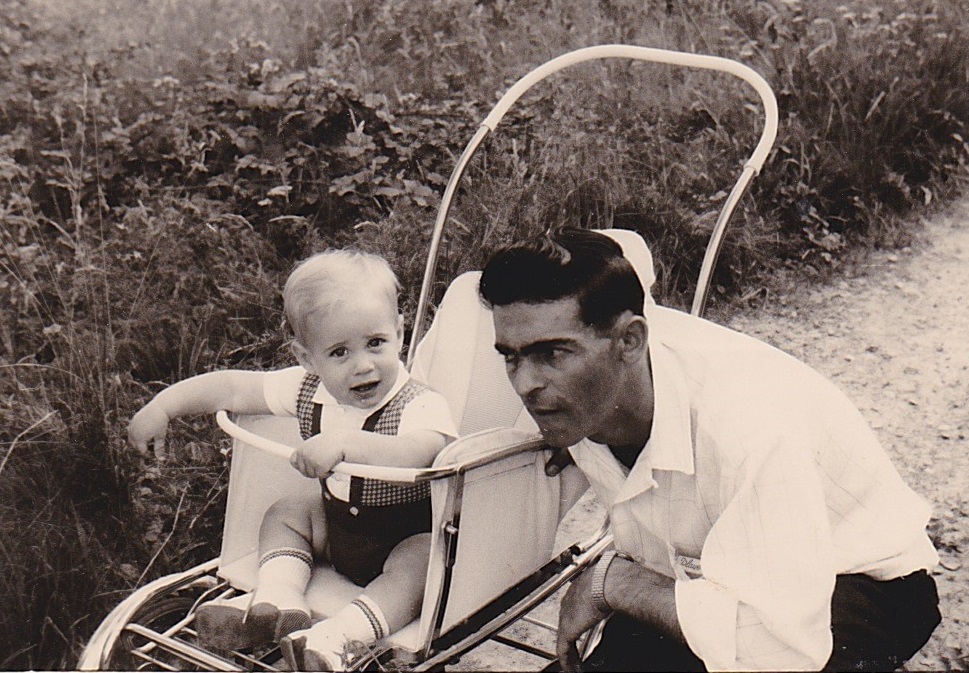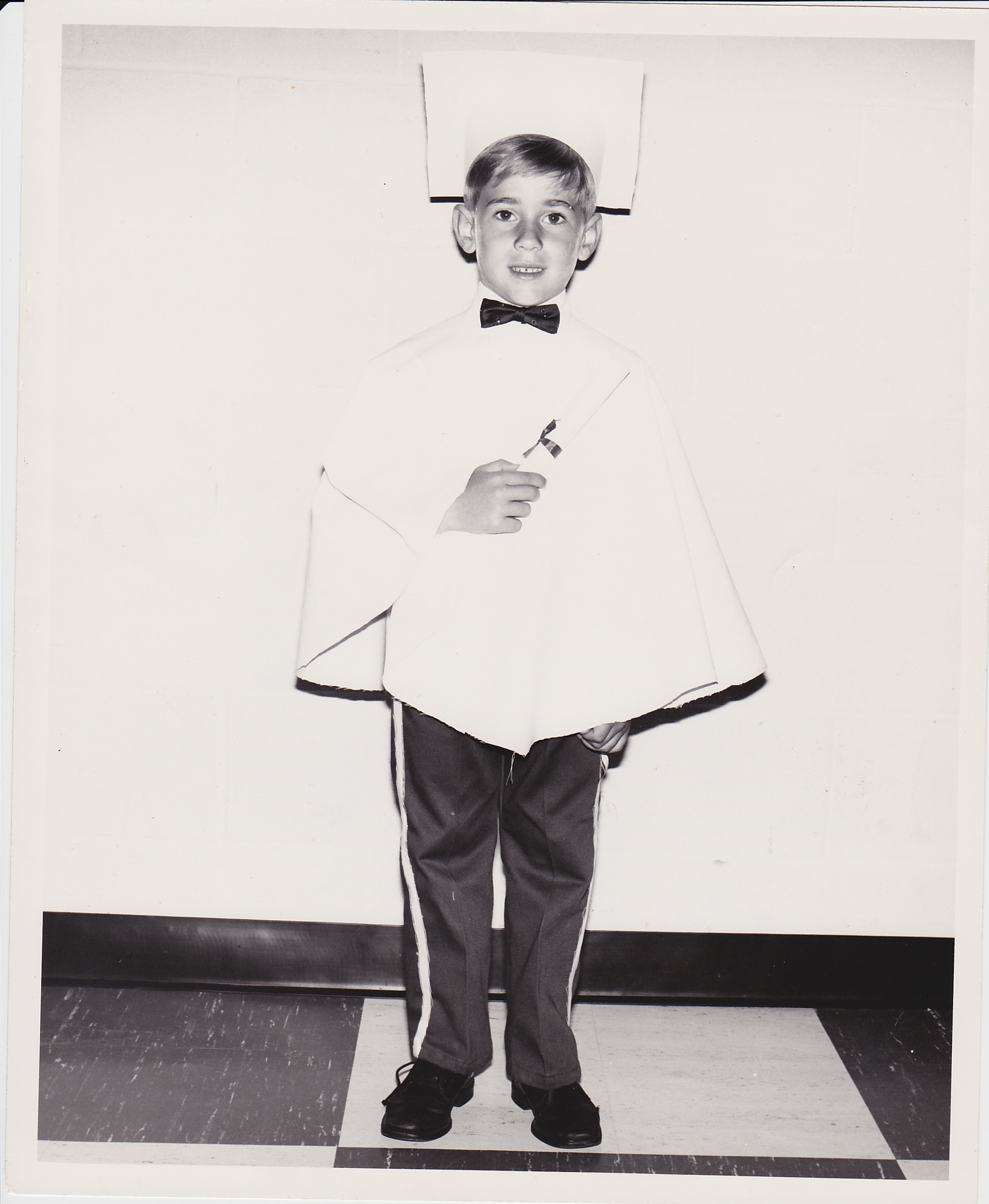LeBlanc.ca
Welcome
Welcome
Ben's Genealogical Research
regarding
LeBlanc

regarding
LeBlanc

Daniel’s parentage has provoked a great deal of debate within the LeBlanc Genealogical community. Rene is the contested name of Daniel’s Father. My research, as limited as it is, could not find any evidence that Rene is Daniel’s father, and despite a lack of proof, people still want to add him to the list, and some go even further and name Rene's father as Pierre of Alphonse.
In genealogy, it's not uncommon for researchers to include placeholders or speculative information in their family trees. This often happens when there's a gap in the available records, and individuals want to show a potential connection between generations even if the direct evidence is lacking.
These placeholders may include individuals labeled as "possible parents" or "hypothetical ancestors." Researchers might use such labels to indicate that they have not found concrete evidence linking a particular individual to their parents but believe there is a logical or likely connection based on other circumstantial evidence.
It's crucial for genealogists and family historians to clearly distinguish between verified information and speculative connections in their research. Including such placeholders can be a way to organize and document ongoing research efforts, and it helps researchers and other family members understand the level of certainty associated with each piece of information.
As more records become available or as new research methods are developed, it's possible to fill in these gaps and update the family tree with more accurate information. Genealogy is an evolving field, and researchers often collaborate to share findings and refine family trees over time.
Notwithstanding Rene's questionable existence, someone was obviously Daniel's father and I wonder what kind of man he would have been. Born in the very late 1500's, I imagine that he was a farmer. Perhaps strict with his wife and children. Did he prefer beer or wine? Did he want to go with Daniel to the new world? Maybe he did and didn't survive the crossing. I would love to know.
I only list Rene here to pass on opinion, my research stops at Daniel.
Forgive me, I have since misplaced the source of the quote (Possibly Stephen White) below regarding the parentage of Daniel, however, I still include it here because I believe that the writer was very well informed:
“This information has no reliable basis in fact. It was originally proposed by a Mr. d'Entremont from Nova Scotia many, many years ago. He found a family named LeBlanc in the La Chausee area of France and assumed they had to be ancestors of Daniel. The reference to Alphonse is the only one in the late 1500s that refers to a family named LeBlanc (or DeBlanc, perhaps), and some researchers, desperate for links to Daniel's past, assigned him to this family. Investigations conducted after Mr. d'Entremont's research revealed that there was no basis to his assertions. Unfortunately, Daniel's ancestry will have to remain a mystery.”
Daniel and his wife, Francoise have the proud distinction of being the founding ancestors of the LeBlanc family in North America. The noted Acadian scholar, Placide Gaudet (1850-1930) wrote about the beginnings of the LeBlanc family in Canada; see and read the story here.
Back in France, Daniel assumedly lived in the small French commune or district of Martaizé, (Poitou) ruled by the Lord Charles de Menou D'Aulnay. D'Aulnay is claimed to be a pioneer of settlements in the New World and Daniel would have been recruited through D'Aulnay's French network and likely on an initial three year engagé (these labourers were nicknamed, “trente-six mois").
In or around the year 1645, Daniel is approximately 19 years old, just a teenager really and he becomes one of the early immigrants to Port Royal, Nova Scotia, Canada (present-day Annapolis Royal).
Daniel had likely been on his own already for a couple of years, ready and willing to take the little that he owned, get on a ship and worry about food and money when he got there. It would have been an amazing and frightening adventure for a young man to travel half a world away and establish himself anew. Knowing what I know about teenagers, I can imagine that Daniel may not have had any real plans other than to just to go somewhere.
France, in the 17th century was characterized by a feudal system, absolute monarchy, and a predominantly agrarian economy. The "30 Years War" had been raging for about 27 years by 1645 and Daniel would have experienced the impact of that war, such as displacement, economic hardship, possibly direct involvement in military service and likely trauma of some sort. Was his father a casualty of the war? Perhaps Daniel and his father had a falling out or maybe it was just a 19-year-old wanting to spread his wings with promises of wealth and adventure from D’Aulnay’s recruiters. What circumstances actually lead to his decision to make that journey; what made him leave France?
Daniel's journey would have been a trying 6 to 12 week affair on an overcrowded cargo ship, likely a merchant ship or fluyt (Dutch cargo ship). Food would have been scarce and likely some people would have died during the crossing due to scurvy and other diseases.
Once in Port Royal, there would have been some initial administration, either reporting to D’Aulnay or the settlement overseer. He would have been assigned to a job on a farm, some construction project or simply labour for his three-year term.
Daniel, with other French colonists settled on the north side of Port Royal River, to the north-east of the Belisle march, about 6 miles from the fort, half a mile from St. Laurent Chapel.
Click on image to go to Google Maps
He married the widow Francoise Gaudet; the date of their ceremony has always been in dispute. Some surmise that the wedding was in 1642, another 1645 and Mr. Placide Gaudet thinks 1650. Perhaps she accompanied Daniel on the voyage over?
In 1654, a 28 year old Daniel helped defend his community from an English expedition that captured and plundered parts of Acadia (including actions against Port Royal and nearby posts). There would have been a few skirmishes over the years between the Frence and the English. In 1670, Port-Royal was restored to France by the Treaty of Breda; Daniel is in his mid-40s at that time and is now a well established and respected settler.
The 1671 census for Port Royal reported that Daniel, now a 45-year-old labourer was blessed with a total of seven children: one girl and six boys. His wife Francoise was age 48 at the time and Daniel owned livestock totaling 18 cattle with horns and 26 female sheep. Together, they worked 10 acres of land that was situated in two different locations.
He was also in the neighborhood when in 1690, Sir William Phips led a New England provincial fleet that seized Port Royal in the Battle of Port Royal, part of King William’s War. Phipps ordered the inhabitants to select six from among them to form a council that would ensure that peace & justice would prevail, Daniel was one of those selected.
I read somewhere, many years ago, that "Dan" & "Fran", if I may be so informal, were buried in the Garrison Cemetery at Port Royal, but I have to wonder about that. Their home is a good 10 miles from Port Royal proper and that would have been a long journey just to bury someone. I suspect that the couple are buried on their land somewhere or at the nearest parish in Belisle. The Garrison Cemetery does not even have any headstones for LeBlanc’s; only a memorial plaque that states that Acadians used this cemetery, so it was just assumed that they had been buried there.
Daniel’s arrival in the new world, circa 1645-1650, doesn't appear to have been recorded. That is to say, that as far as the documentary trail goes, no historian has yet uncovered a surviving recruitment contract or ship’s passenger list that names Daniel LeBlanc. This is unfortunately quite typical for Acadian pioneers of the 1640s: the archival survival rate is poor, and many of the notarial records that would have contained contracts of engagement either were never drawn up in Acadia or were lost over time.
A document does exist, dated 05 Oct 1687, that concerns a deposition made by Daniel and others about work done in Acadia by the Sire of D’Aulnay back in 1650. I would like to see a copy of this, but it is proving difficult to obtain. Among those who signed, there was "the mark of" Daniel, this indicating he was living in Acadia before the death of D’Aulnay in June of 1650.
A controversial web site, LeBlanc DNA, try’s to explain that there is no evidence of Daniel's arrival in the new world from France because he was possibly born in the New France, the son of a Scotsman! I will leave it up the you learned readers to decide if the controversial information has merit.
Daniel's Children:
Jacques - b.1651
Marie-Francoise - b.1653
Etienne - b.1656
Rene - b.1657
Andre - b.1659
Antoine - b.1662
Pierre - b.1664-d.1717

Pierre LeBlanc
b.1664 in Port Royal
m. 1st- 1685, 2nd- 1694
d.1717 05 Nov, Annapolis Royal
Pierre was the youngest son of Daniel LeBlanc and he was the only child to remain in the Port Royal area for his entire life. He married the beautiful Marie Theriault in 1685 and their son Pierre was born the following year.
Unfortunately, within only a few years Marie had passed away; Pierre being identifed as a widower ("veuf") in the 1693 census of Port-Royal and living at his parent's home. Pierre married Madeleine Bourque in 1694 and they parented an additional 7 children together. The Parish records indicate that Madeleine & Pierre (mostly Madeleine) attended and witnessed many weddings, births and baptisms. The couple played an active part within Church and community; these occasions not only being important events in their own right, but were also a form of rare entertainment at the time.
Pierre made somewhat of a name for himself as a Captain of the Militia, engaging in defense of Port Royal against English/Boston-based incursions. At the age of 43, a wound to his hip in 1707 is specifically mentioned in Acadian registries. He was also reportedly imprisoned (with other Acadian officers) in Boston after the 1710 fall of Port Royal; he remained captive until autumn 1711.
In 1717, Pierre died of an un-named illness at the age of 53. The parish record of Pierre's death indicates that the Monseigneur that created the record had only been told about the passing, not actually having witnessed it himself. I enlisted the help of a cousin to translate the document, however, he, and a friend of his, had a difficult time deciphering the Monseigneur’s handwriting, but in the end, they were able to confirm the date, circumstances and location of the unforunate event.

Pierre’s children:
with Marie:
Pierre - b.1686
with Madeleine:
Joseph - b.1701
Jean-Simon - b.1703
Marie - b.1706
Paul - b.1711
Madeleine - b.1714
Charles -b.1716-d.1805
Pierre - b.1708
with Marie:
Pierre - b.1686
with Madeleine:
Joseph - b.1701
Jean-Simon - b.1703
Marie - b.1706
Paul - b.1711
Madeleine - b.1714
Charles -b.1716-d.1805
Pierre - b.1708
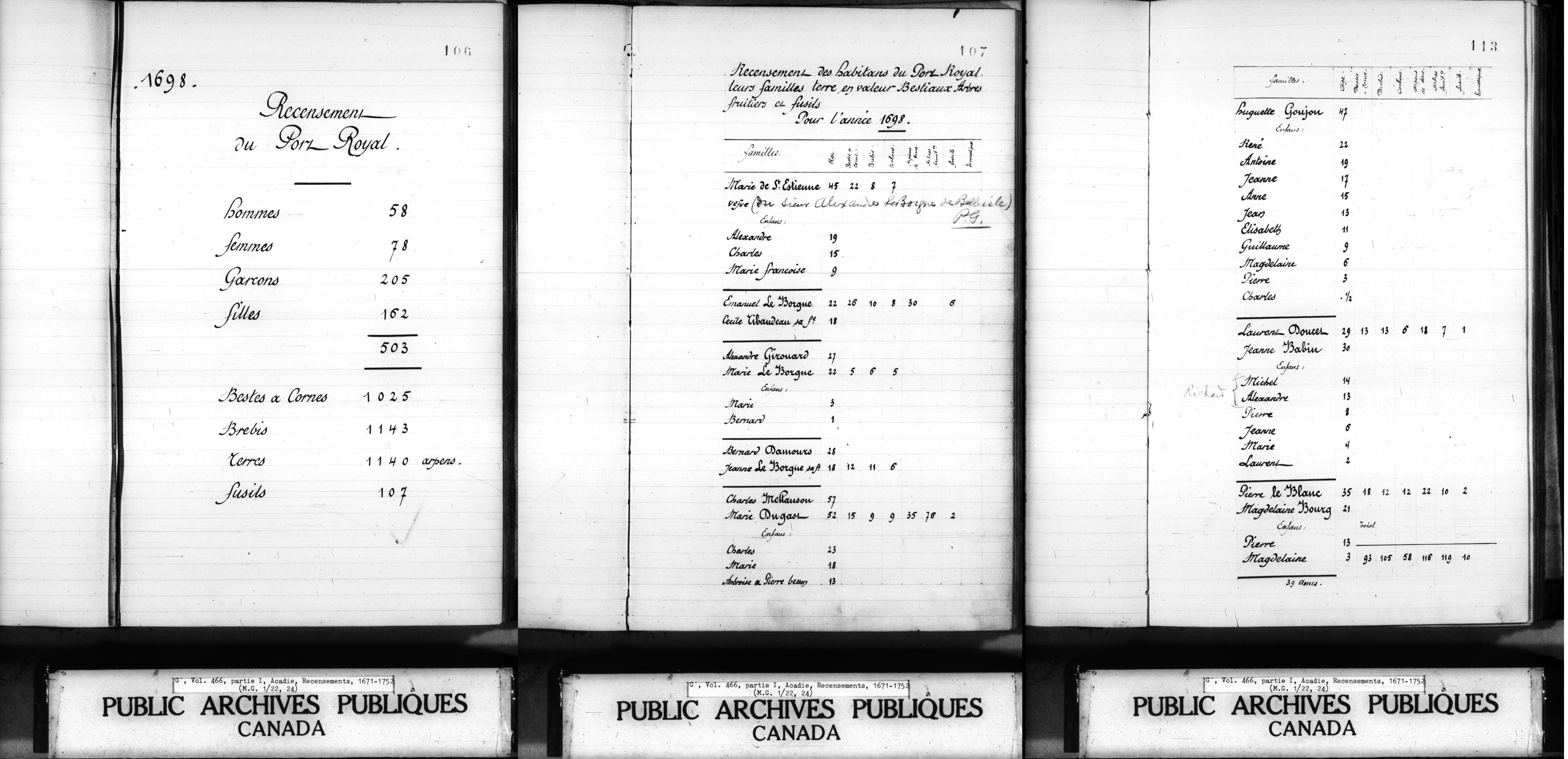
Charles LeBlanc
b.1716 26 September (Dec?) Port Royal
m.1735, 10 January
d.1805, 30 September, Clare

Charles, apparently nicknamed "Chat", at the age of 19 was married on 10 Jan 1735 to 18 year old Madeleine Girouard.

Having trouble reading this document? You are not alone. Here is some translation: The Priest was De St. Poncy de La Vernède, Registration Date 10 January 1735, Witnesses: Pierre Landry, Paul Blanchard, Alexandre Hebert, and the brides parents François Girouard and Claude Girouard.
After two decades of relative peace following this marriage, Charles with many other Acadians, experienced the Great Expulsion of 1755. They of course had to flee, some like Chat as far away as New Brunswick where they successfully eluded the vigilance of their pursuers and became the critical colonists with those who returned from exile.
According to a LeBlanc family history, around 1758, Charles and his family were “refugees” having been displaced during the turmoil of the Acadian Deportation. The same source says that after 1758 they went to Miramichi (in present-day New Brunswick), and later again Charles returned (or resettled) in Anse-des-LeBlanc (Pointe-de-l’Église), Baie Sainte-Marie, Nova Scotia, by 1768.
Charles and Madeleine became some of the first Acadians to live in Clare, Nova Scotia during the spring of 1769. He was permitted a license of occupation for 200 acres of land in that township on 29 Jun 1775. A warrant to Survey (dated 1790 and an order to put it into effect dated 1799) was issued and it included 21,300 acres that was divided and issued to the inhabitants of the Township of Clare (French Acadians) who wanted a grant of land back of their settlement. A 400 acre tract of land was granted to Charles and family. It was situated at Anse LeBlanc (LeBlanc Cove), he reportedly had 7 family members with him on the license and grant with an annexed plan issued afterwards. Due to Charles being the founder of the settlement in that locality it was naturally called "LeBlanc's Cove". This anglicized literally, is known as White's Cove. Sadly, Madeleine his wife, aged 90, died on a Saturday, 08 June 1805 and was buried in the cemetery at Church Point, where her grieving husband soon joined her the following September. The census of 1768 and 1770 shows Charles as owning a fishing boat and he had eight children in total.
Charles’ children:
Anne Gertrude - b.1735

Charles – 1738
Pierre - b.1740-d.1773
Madeleine - b.1743
Marie Modeste - b.1744
Felicite - b.1746
Rose Proxide - b.1749
Joseph – 1750
Pierre LeBlanc
b.1740 21 August, Port Royal
m.1766
d.1773 White's Cove - Anse Des Le Blanc's
b.1740 21 August, Port Royal
m.1766
d.1773 White's Cove - Anse Des Le Blanc's
Pierre married Marguerite Proxede Belliveau in 1766, Port Royal and fathered a total of four beautiful children. Marguerite attended her son's wedding as a widow it would seem, but her eventual second husband, Denis Doucet was at and witnessed the ceremony, indicating that a relationship between the two may have already developed. It is likely that Pierre and his father read, “The Nova Scotia Chronicle and Weekly Advertiser” a common newspaper that was printed at the time. Pierre is buried in the first Acadian Cemetery located at LeBlanc Cove in St. Bernard, Nova Scotia. These days there is a newly renovated cross bearing his name & dates. Pierre was only 33 when he died and estimating that, on average, the LeBlanc Males live to about age 69, there must have been a sickness, accident or worse involved in his demise. Poor fellow none-the-less.
English translation by: David Brian Snook
In the year 1740, on August 22, was baptized by the undersigned priest Pierre LeBlanc, born the previous day from the legitimate marriage of Charles LeBlanc and Madeleine Girouard, his father and mother, and with godfather François Girouard and godmother Marie Joseph Forest, who declared not knowing how to sign. (name of priest).
Pierre's Children:
Pierre - b.1767
Marin - b.1770 - d.1845
Anselme - b.1772
Cajetan - b.1774
Marin LeBlanc
b.1770 08 August, Port Royal or Annapolis Royal
m.29 August 1799, Church Point
d. August 28, 1845
b.1770 08 August, Port Royal or Annapolis Royal
m.29 August 1799, Church Point
d. August 28, 1845
I highly suspect that Marin and Madeleine (Magdelaine?) Gaudet, with their parent’s consent of course, actually began living together on or about the 20th November 1794, long before being married; perhaps due to the lack of a priest in the area? 29 August 1799, is the date that the actual marriage took place and recorded. A letter of intent apparently was signed and witnessed in 1794 and presented to the church in 1799. Note that Madeleine would have been 8 months pregnant with their son Maurice during the marriage ceremony. Also note that at the wedding, there were only 3 people that could sign their names, Marin could not. (This was mentioned in the record) Marin and Madeleine eventually parented 12 children. (Info taken from recorded marriage) Marin, I'm told, is buried in St. Bernard, Nova Scotia. But now I'm starting to wonder, I suspect that he is buried in the St Joseph, Weymouth cemetery.

Marin's Children:
Maurice - b.1799 - d. 1881
Dominic
Marguerite - b.1801
Translation of the Marriage Record
Maurice LeBlanc
b.22 September 1799, Port Royal
d.1881 Ohio, Nova Scotia
b.22 September 1799, Port Royal
d.1881 Ohio, Nova Scotia
Maurice married Elizabeth COMEAU and fathered 4 wonderful children. I don't really know too much more.
This is Maurice's birth record translated:
“the 8 December 1799, I the undersigned priest officiated the baptism ceremonies for Maurice born 22 September of the current year of the legitimate marriage between Marin LeBlanc and Magdelaine Gaudet of this parish who had been baptized in my absence by Helarion Therriau as the mother of the child had declared; she presented the child in person, the godfather was Cajetan LeBlanc son of the late Pierre LeBlanc and uncle of the child, also of this parish. The godmother Judith Gaudet also of this parish declared not knowing how to sign.”
You may be pleased to learn that the house Maurice lived is still around! 7113 HIGHWAY 340, Weaver Settlement, Nova Scotia B0W3T0. (The white house in the back ground belonged to his son Luc)
It is painted green these days and the barn appears to be well maintained. In fact, a LeBlanc family still resides there, however they are not directly related to my lineage. I have Maurice documented in the Census of 1871 listed as a 72 year old farmer and in the Census of 1881, where at 82 years of age he was living with his son Sinturien
Maurice’s Children:
M. Madeleine - b.1828,
Elizabeth - b.1830
Sinturien Gilles - b.02 Oct 1837
Luc (M) Hippolite - b.14 Aug 1842
Luc M.(Hippolite) LeBlanc
b.14 Aug 1842, St Bernard, Nova Scotia
m.1869 St Mary’s Church Clare
d.08 Jan 1910, Weymouth, Nova Scotia (Influenza)
b.14 Aug 1842, St Bernard, Nova Scotia
m.1869 St Mary’s Church Clare
d.08 Jan 1910, Weymouth, Nova Scotia (Influenza)

Luc married Marguerite Saulnier and parented 9 children. The census of 1881 reports 6 children including a girl named Nessi (age 1 year) and the census of 1891 shows 9 children without Nessi. Who the heck is Nessi I asked myself. I have to guess at this but I would say that she (Nessi) may have been farmed out by her parents. That is the only thing that makes any sense. My uncle said that Luc had no child by the name of Nessi. Now, unless something horrible happened to Nessi and it's not spoken of, I can only assume that she was someone else's child living with Luc. The “Farming out” of children happened all the time I was told. A family became too large at times, so the children were cared for by their relatives. After a couple of years, they would then be returned to their parents.
My father also told me that the "M", sometimes included in Luc's name, may stand for Maurice his father. In the "olden days", when everyone knew everybody and everyone had a similar name, it was not uncommon for a person to be called by his first and his father's name, hence "Luc a Maurice" or "Luc M". Dad also noted that this terminology sometimes found its way into official documents like the census. When I first asked Dad about our ancestors, I remember him saying, "Fred a Mede a Luc a Maurice", named off the family line as if it was a common rhyme!
Luc's house is still standing! The image above is from my Father's visit in 1997. It is located about 150 meters behind Maurice's place in Ohio, Nova Scotia just south of Weymouth. The address is 7115 HIGHWAY 340, Weaver Settlement, Nova Scotia B0W3T0. I know this because as I was researching the location in 2017, I found that the house was for sale for a mere $72K CAD!! It would be fun to own it. Small detail however; the real estate listing states that the house was built in 1915, but Luc died in 1910, I'm not sure what to make of that. Luc is also documented in both censuses of 1881 & 1891. His wife, like every other woman I know, kept her age a secret, even from the census people. In 1881 her age was reported as 45 and in the census of 1891 her age was again reported as 45! Either that or Luc couldn't remember her birthday! Luc died from the Grippe (Influenza), but he also had some form of heart disease.
Luc can now be found in the St. Joseph Cemetery, just a short ditance from his home, buried alongside his wife Marguerite & their son Leo. All their names are on the one stone. It was not a very cold day when Luc was buried even though it was January. He has a huge granite headstone, not very wide but tall and oblesk like, standing straight up with a pointed top. You can easily see it from the road in Google Maps.
Luc can now be found in the St. Joseph Cemetery, just a short ditance from his home, buried alongside his wife Marguerite & their son Leo. All their names are on the one stone. It was not a very cold day when Luc was buried even though it was January. He has a huge granite headstone, not very wide but tall and oblesk like, standing straight up with a pointed top. You can easily see it from the road in Google Maps.
Luc's Children:
Marie Emelie - b.1870
Catherine Othalie - b.1872
Francois Leo - b.1873
Anselme (Samuel) Luc A - b.04 Aug 1874
Paul Amedie - b.1878-d.1968
Marguerite Lucie - b.1879
Nessie - b.1880 (in census of 1881, age 1)
Marie Eveline - b.1881/82?
Leander Joseph - b.1886
Emme Ida - b.1889

Marie Emelie - b.1870
Catherine Othalie - b.1872
Francois Leo - b.1873
Anselme (Samuel) Luc A - b.04 Aug 1874
Paul Amedie - b.1878-d.1968
Marguerite Lucie - b.1879
Nessie - b.1880 (in census of 1881, age 1)
Marie Eveline - b.1881/82?
Leander Joseph - b.1886
Emme Ida - b.1889
I found to my delight a photograph where I am actually sitting on my Great Grandfathers lap!
 Records for Amedie appear to be missing! It has been impossible to locate his birth, marriage and death records. His name is otherwise everywhere; death and birth certificates for some of his children.
Records for Amedie appear to be missing! It has been impossible to locate his birth, marriage and death records. His name is otherwise everywhere; death and birth certificates for some of his children.The following information was gleaned from an essay that my uncle, Amedie’s grandson Philip Arthur LeBlanc wrote and passed on to me.
My Great-Great Grandfather Amedie was described by his Grandson, Philip Arthur LeBlanc, as being a very thoughtful and determined man who was always ready to help his friends and especially his family. On a personal note, Amedie suffered from hay fever and asthma and in the evenings he would burn a funny smelling, yellow powder called Kellogg's Asthma Relief that he would inhale and it seemed to help him with his coughing and wheezing.

[Kellogg's Asthma Relief was an old-fashioned remedy for asthma containing the ingredients stramonium and lobelia. The ingredients were burned and inhaled to open constricted airways. They were sometimes combined with cannabis leaves (marijuana). There were even stramonium cigarettes for asthmatics to smoke. Side effects of stramonium include dry skin and mouth, dilated pupils, problems with urination, rapid heartbeat and hallucinations. For these reasons, the Food and Drug Administration has not permitted medications with stramonium for many years.]
Amedie was a jack-of-all trades; farmer, woodsman, cattle rancher, butcher, millwright, sawyer. He was a mixed farmer; meaning that he grew crops and tended livestock. These types of small scale farmers made up the biggest, poorest and most environmentally sustainable agricultural system in the world. As well, in the fall, after the harvest, he was heavily involved with logging and operating sawmills. Amedie was both an accomplished Millwright and Sawyer (A Millwright is a craftsman or tradesman who installs, dismantles, repairs, reassembles, and moves machinery in factories, power plants, and construction sites and a Sawyer is a person who saws timber for a living.
When he was 20 years old (1898), he and his brother Anselm Luc (AKA: Sam or Sammy) set off on their own and after moving north to Weymouth from Ohio, began purchasing parcels of land. One particular large tract of land, about 2 square miles, located east of Weymouth, on the east end of Hogan road, proved to be a very lucrative investment because in 1912, the Dominion Atlantic Railway was building a railway right through this same property and was buying up land for good prices. Eventual sparks from a train engine was said to have caused a wild fire and the entire property was consumed in flames, destroying all the vegetation in the area. Over the next few years however, the property became excellent grazing land and after the railway fenced in the line, people brought in their cattle from miles away to graze there in the summer. Many years later, the property eventually became a large forest with a good array of both deciduous and coniferous trees and Amedie founded a steam powered mill to process the lumber. The whole LeBlanc family was involved in different types of sawmills, whether they be steam, compressed steam or run by water on a water wheel usually set up on a river of large stream.
Amedie was a great conservationist and would not tolerate wasted lumber or willful damage to young trees. When hiring people to log and cut pulp wood they had to go to a four inch top diameter and the remaining tree would be available for anyone to salvage for free firewood. He also sold prepared firewood, hardwood in 4 foot lengths and also 16 inch ready for stove or furnace. Uncle Philip spent a lot of his free time at the camp with his Grandfather.
He married Irene Octavie Gaudet (1881-1924) around the turn of the century, 1900 and fathered twelve children. Irene gave birth to nine boys and three girls and the youngest son Nelson, born in 1921, suffered from epilepsy and had to be carefully monitored throughout his life. In 1924, during the birth of their last child Theresa, there were complications and Mother Irene passed away three weeks afterwards. So Amedie was left to raise the 12 kids. Catherine, who was about 19 and Lucy Margaret, 14 pitched in and helped run the household while Amedie and some of the boys took care of the farm. After Irene’s death, Amedie’s sister, Marie Eveline Gaudet and her husband Mande Gaudet took on the duties of looking after baby Nelson until his death in 1942. Initially, Amedie’s brother took care of the newborn Theresa but that didn’t work out so she moved in with Sam and his family and lived there for the remainder of her childhood believing that Sam was her father and that all of her brothers and sisters next door were only cousins. She eventually married Isaac Amero in 1946 and moved to the USA.
In those days, cattle and pigs were slaughtered on site by both Amedie and Sam, usually in the late fall and the meat was generally pickled or smoked. At the beginning of the Second World War, Amedie had about 80 head of cattle, a pair of oxen and a heavy horse. Three of his sons joined the war effort and after five years, most of the livestock had been sold. Every year, while his sons were overseas, he would plant large vegetable gardens, enough to sustain the son’s families. He always made sure that there was enough root vegetables to hold out for the winter. As well, every fall each family had a pig to slaughter and on some occasions, a cow would be slaughtered. All three sons returned alive from the war.

Amedie's huge white house still stands. He and his brother built it themselves and incorporated a full basement, 2 1/2 stories and it measured about 60 feet long. Amedie lived on one side and the other end, near the barn, was his brother Sam, and later another relative named Felix replaced Sam. In 1997, my Great Uncle Philip lived in Amedie's old place, the other side being rented out.
 The house looks great but the barn is in poor shape. The barn was actually built first and Amedie and Sam lived in there while they constructed the house.
The house looks great but the barn is in poor shape. The barn was actually built first and Amedie and Sam lived in there while they constructed the house. Their wives, Octavie and Edith were both seamstress’ and employed by local tailors in Weymouth.
Amedie’s existence is positively documented in a few Canadian censuses. In 1881, in the Province of Nova Scotia, Digby county, St Bernard, he was 4 years old; again in 1891 (same place) at 14 years of age. Note that in all known records his name is spelled differently. In the 1881 census his name looks like Amuei & in 1891, Medi and again in 1901 Media. His relatives spell it a few different ways as well; Amedie, Amede, Amedee. This initially made it difficult to find his name in the records. In 1901 he was recorded as living in Weymouth Bridge with his wife and his brother Anselme (Sam) & wife Edith.
Joint owner of a Water powered sawmill (Griffiths, now demolished), Owner of 2 Steam powered Sawmill and the first electric sawmill in Digby County, original site property of Evelyn LeBlanc only mounting for the huge electric motor left. Weymouth, Digby County.
Amedie is buried in the St Joseph Cemetery, with his wife beside him and he also shares his plot with a few other family members. On the front you have him, his wife and my Great Uncle Philip and on the back of the headstone there are 3 other names: Joseph Nelson, Pte Gustave J. and Pte Richard C. You can easily see the headstone from the road.

Amedie found in Canadian Census
Amede's Children:
Joseph Bernard - b.1901
Frederick Joseph - b.1902-d.1970
Mary Catherine - b.1903
Charles Edward - b.1905
Lucie Marguerite - b.1908
Sgt Philip Luc - b.1910-d.2004 (WW2 Veteran)
Pte Charles Richard (Bing) - b.1914 (WW2 Veteran)
Amedee Adolphe (Ike) - b.1915
Pte Joseph Gustave - b.1919 (WW2 Veteran)
Joseph Albert - b.1917
Joseph Nelson - b.1921-d.1942 (Epileptic)
Theresa Rosalie - b.1924
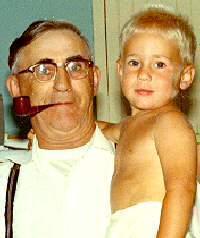
Joseph Frederick LeBlanc
b.23 Oct 1902, Weymouth, Nova Scotia
m.29 Jul 1931, Saulnierville, Nova Scotia
d.22 Jan 1970, Toronto, Ontario
b.23 Oct 1902, Weymouth, Nova Scotia
m.29 Jul 1931, Saulnierville, Nova Scotia
d.22 Jan 1970, Toronto, Ontario
I was too young to actually remember my Grand Father but I do have a photo of him holding me. Fred married Mary Lorette Saulnier (1914-1999) in July of 1931. My father told me that Grandpa worked at a few different jobs in his lifetime, one being a stoker/fireman at the ship factory in Weymouth. This involved keeping the furnaces going to heat the factory. He also worked up north on Baffin Island doing much of the same thing and he injured his back while manhandling a 45 gallon drum.
In between harvesting wood off his own land and employment at the ship factory, he also worked at Tupper Warren's box factory in Digby, either in the saw mill or the box factory itself. Every Saturday at noon, the mill would close down and everyone would get paid if they had a wage coming. It was said though, that the French employees couldn't get paid in cash. They would be given a sack of flour or sugar and then they would have to go down to the "South End Grocery" and sell that to the store owner and then at least have some money to go home with. It was certainly a hard life as jobs go.
I understand that he had contracted Turburculouis and had been bed ridden for a little while. He struggled with this because he was used to being the bread winner of the house. I heard some story about Grandpa surviving a jump off a local bridge on a dare and it is known in the family that he stuggled emotionally.
He sadly died while visiting his son near Toronto, Ontario in January 1970. Fred is buried in the St Joseph Cemetery near Weymouth with his wife beside him.
Fred’s Children:
Philip Arthur - b.1931-d.2008
Mary Irene - b.1933
Peter Existe - b.1934-d.1997
Joseph Emile - b.1937-d.2013
Joseph Desiree - b.1939-d.2000
Mary Rosalie - b.1940-d.2001
Joseph Bernard –b.1941-d.1941
Mary Margaret Catherine - b.1942-2008
Cecile Ann - b.1943
John Willy - b.1945-d.1945
Theresa Octavie - b.1948
Mary Irene - b.1933
Peter Existe - b.1934-d.1997
Joseph Emile - b.1937-d.2013
Joseph Desiree - b.1939-d.2000
Mary Rosalie - b.1940-d.2001
Joseph Bernard –b.1941-d.1941
Mary Margaret Catherine - b.1942-2008
Cecile Ann - b.1943
John Willy - b.1945-d.1945
Theresa Octavie - b.1948
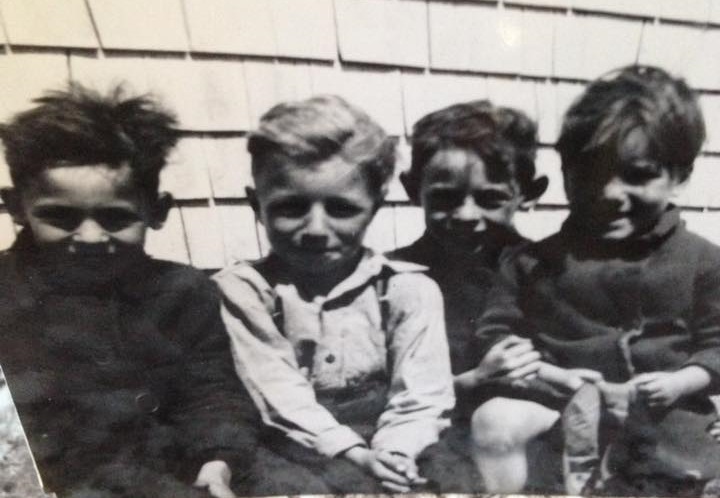
Joseph LeBlanc
b.03 Nov 1937, Weymouth, Nova Scotia
m.03 Aug 1963, Brandon, Manitoba
d.15 Dec 2013, Brandon, Manitoba, 76 Years
b.03 Nov 1937, Weymouth, Nova Scotia
m.03 Aug 1963, Brandon, Manitoba
d.15 Dec 2013, Brandon, Manitoba, 76 Years
Joe was born at his home in Weymouth on November 3, 1937. The day was rather nice for November, high of 10 degrees. It had rained the day before and the air smelled fresh and crisp. At that time, it would have been unusual for a woman to give birth at a hospital. Just too far to travel given the short time line for these things sometimes. Joe was delivered by either Doctor Portier or Doctor Melanson.
Weymouth. A small village located on rolling hills banking the Sissiboo River in Digby County, Nova Scotia, Canada. The town was settled in 1783 by British Loyalists and the area has long been known for its rich resources-based industries as well as its diverse blend of cultures including Mi’kmaq, British Loyalists, African Canadian and Acadian. Although the Village of Weymouth is small, the Greater Weymouth Area includes many smaller neighboring communities.
A traditional Christian family, the LeBlanc’s of Weymouth, Nova Scotia, named their children after various saints and Joe, being no exception, was named Joseph Emile. This naming convention itself was commonplace, however, they went a little further and addressed the children using their second names. So, growing up, Joe was known as Emile, his brother Philip was known as Arthur and so on. However, to confuse matters a little more, the children sometimes called each other by their first names, and they would sometimes be scolded by their Mother for not using the second name.
This would eventually cause even more confusion for the generations to follow, because the young nieces and nephews sometimes understood that Joseph and Emile were two different people.
At the age of three years old, and for reasons he was never clear on, he was farmed out from his home in Weymouth and moved to live with his Grandmother (Mary Rose Saulnier) in Saulnierville, a little ways south of Weymouth. It was a French speaking village and as he grew up, he learned to speak French, the little English that he did know faded away. He always joked that his folks could not afford to feed him, but it was more likely something to do with space available in the house.
In June of 1941, his brother Joseph Bernard was still born. Unfortunately, this had happened before, in fact, on 24 Aug 1936, Joe’s Mother had some complications with an earlier pregnancy, and it resulted in a premature birth (only 5 months old); the baby, named Bailey, didn’t survive. It is interesting to note that if Baily had gone full term, until December, Joe may not have been born at all.
When Joe was around 4 years old, Grandpa Saulnier was building a small dog house and Joe was allowed to shingle its roof and when he was finished the shingles were a bit crooked (a lot). His Uncle Gus (his Mother’s Brother, who had lost his legs in the war) made him a wooden wagon.
Around June of 1943, Joe returned to his family home in Weymouth in the hopes that he would learn to speak some English before school started in September. He really only spoke French at this point, and reportedly only knew the words yes, no and apple in English.
Weymouth had its own school house; shaped like a square box and constructed with a centered front door. As you walked in, there was a room on either side of you and a staircase in front that led up to a second floor which also had two rooms. In September, Joe started in what they called Primer class for six months and then went onto grade 1. The school classroom accommodated three 3 different grades in the same room: Primer, 1 and 2.
At the age of 12, Joe joined the Boy Scouts, but did not have much opportunity for group participation in such an isolated community. He also got a job at the local bowling alley setting pins and eventually saved enough money to buy himself a bike and for his mother; her first washing machine.
When he was around the age of 14, he built a box type trap and was able to catch a couple of squirrels. He kept them for a couple of months and during that time some man with a traveling circus or fair found out that he had them and offered to buy them, but Joe decided to keep them. It turned out that the squirrels wouldn’t eat properly anyway, and Joe thought that was because he had them living in an old Mink smelling pen, eventually he just let them go free.
In late 1953, he got a job at Campbell’s store, as a grocery clerk, initially working before and after school and on Saturday’s earning $15 a week until he completed grade 9. He then worked fulltime at Campbell’s until February 1955.
Inspired by his older brother, Philip, Joe, now 17 years old, along with his cousin Edward, joined the Canadian Army in February 1955 for an initial 3-year engagement, service number SF98800. And because he was a man of small stature, 5’ 3 ¾ “ height and weighing 109 lbs, one might have thought to enrol him as a clerk or storesman. On the contrary, he was allocated to the Royal Canadian Artillery, one of the most arduous trades in the Canadian forces that involved extreme heavy lifting and some of the most austere work conditions. Joe was however up to the task. Edward ended up in The Black Watch, an infantry unit.
Imagine the excitement as those two made their way to Halifax to join the army. It was about a three-hour drive, longer by bus. I have to wonder if their parents even knew what they were up too. After arriving in Halifax, Joe then found out, that because he was 17 years old, he required permission from his parents to join. So he had to contact his mother and then wait for a wire from her before they would let him join. The wait for that wire would have been excruciating. He did receive permission, he signed up and then was granted a weeks leave before he had to travel to New Brunswick for his basic training. Soon, "Gunner" LeBlanc was on a bus destined for basic training in Utopia, New Brunswick. What an adventure this would have been for two young boys from a somewhat isolated rural community. He and his cousin Edward traveled from Halifax, by train, on a very scenic ride through Nova Scotia and southern New Brunswick. Cousin Edward was dropped off in Sussex for his basic infantry training and Joe carried on, by bus, alone, through St John to Camp Utopia for his basic training.
Weymouth. A small village located on rolling hills banking the Sissiboo River in Digby County, Nova Scotia, Canada. The town was settled in 1783 by British Loyalists and the area has long been known for its rich resources-based industries as well as its diverse blend of cultures including Mi’kmaq, British Loyalists, African Canadian and Acadian. Although the Village of Weymouth is small, the Greater Weymouth Area includes many smaller neighboring communities.
A traditional Christian family, the LeBlanc’s of Weymouth, Nova Scotia, named their children after various saints and Joe, being no exception, was named Joseph Emile. This naming convention itself was commonplace, however, they went a little further and addressed the children using their second names. So, growing up, Joe was known as Emile, his brother Philip was known as Arthur and so on. However, to confuse matters a little more, the children sometimes called each other by their first names, and they would sometimes be scolded by their Mother for not using the second name.
This would eventually cause even more confusion for the generations to follow, because the young nieces and nephews sometimes understood that Joseph and Emile were two different people.
At the age of three years old, and for reasons he was never clear on, he was farmed out from his home in Weymouth and moved to live with his Grandmother (Mary Rose Saulnier) in Saulnierville, a little ways south of Weymouth. It was a French speaking village and as he grew up, he learned to speak French, the little English that he did know faded away. He always joked that his folks could not afford to feed him, but it was more likely something to do with space available in the house.
In June of 1941, his brother Joseph Bernard was still born. Unfortunately, this had happened before, in fact, on 24 Aug 1936, Joe’s Mother had some complications with an earlier pregnancy, and it resulted in a premature birth (only 5 months old); the baby, named Bailey, didn’t survive. It is interesting to note that if Baily had gone full term, until December, Joe may not have been born at all.
When Joe was around 4 years old, Grandpa Saulnier was building a small dog house and Joe was allowed to shingle its roof and when he was finished the shingles were a bit crooked (a lot). His Uncle Gus (his Mother’s Brother, who had lost his legs in the war) made him a wooden wagon.
Around June of 1943, Joe returned to his family home in Weymouth in the hopes that he would learn to speak some English before school started in September. He really only spoke French at this point, and reportedly only knew the words yes, no and apple in English.
Weymouth had its own school house; shaped like a square box and constructed with a centered front door. As you walked in, there was a room on either side of you and a staircase in front that led up to a second floor which also had two rooms. In September, Joe started in what they called Primer class for six months and then went onto grade 1. The school classroom accommodated three 3 different grades in the same room: Primer, 1 and 2.
At the age of 12, Joe joined the Boy Scouts, but did not have much opportunity for group participation in such an isolated community. He also got a job at the local bowling alley setting pins and eventually saved enough money to buy himself a bike and for his mother; her first washing machine.
When he was around the age of 14, he built a box type trap and was able to catch a couple of squirrels. He kept them for a couple of months and during that time some man with a traveling circus or fair found out that he had them and offered to buy them, but Joe decided to keep them. It turned out that the squirrels wouldn’t eat properly anyway, and Joe thought that was because he had them living in an old Mink smelling pen, eventually he just let them go free.
In late 1953, he got a job at Campbell’s store, as a grocery clerk, initially working before and after school and on Saturday’s earning $15 a week until he completed grade 9. He then worked fulltime at Campbell’s until February 1955.
Inspired by his older brother, Philip, Joe, now 17 years old, along with his cousin Edward, joined the Canadian Army in February 1955 for an initial 3-year engagement, service number SF98800. And because he was a man of small stature, 5’ 3 ¾ “ height and weighing 109 lbs, one might have thought to enrol him as a clerk or storesman. On the contrary, he was allocated to the Royal Canadian Artillery, one of the most arduous trades in the Canadian forces that involved extreme heavy lifting and some of the most austere work conditions. Joe was however up to the task. Edward ended up in The Black Watch, an infantry unit.
Imagine the excitement as those two made their way to Halifax to join the army. It was about a three-hour drive, longer by bus. I have to wonder if their parents even knew what they were up too. After arriving in Halifax, Joe then found out, that because he was 17 years old, he required permission from his parents to join. So he had to contact his mother and then wait for a wire from her before they would let him join. The wait for that wire would have been excruciating. He did receive permission, he signed up and then was granted a weeks leave before he had to travel to New Brunswick for his basic training. Soon, "Gunner" LeBlanc was on a bus destined for basic training in Utopia, New Brunswick. What an adventure this would have been for two young boys from a somewhat isolated rural community. He and his cousin Edward traveled from Halifax, by train, on a very scenic ride through Nova Scotia and southern New Brunswick. Cousin Edward was dropped off in Sussex for his basic infantry training and Joe carried on, by bus, alone, through St John to Camp Utopia for his basic training.
The Canadian military pretty much defined my dad. He served a full 30 Years in the Royal Canadian Artillery and retired in Brandon, Manitoba in 1985. Something that always interested me was the way he liked to wear his watch on the side of his wrist (Check out the photo), he said it was easier to see it that way. He received a Medallion from the Government of Canada for 35 years of Service, but eventually completed 40.
He often stated that he would live until he was 92….more to follow
Some video links that help to illuminate his life:
Where he lived
1937: Weymouth, Nova Scotia
1940: Saulnierville, Nova Scotia
1943: Weymouth, Nova Scotia
1955: Camp Utopia,New Brunswick
1955: CFB Gagetown, New Brunswick
1955: Deilinghofen, West Germany
1957: Petawawa, Ontario
1958: Shilo, Manitoba
1959: Petawawa, Ontario
1962: Picton, Ontario
1962: Shilo, Manitoba
1963: Brandon, Manitoba
1963: Langscheid, West Germany
1966: Petawawa, Ontario
1969: Oromocto, New Brunswick
1971: Oromocto, New Brunswick
1974: Regal, West Germany
1975: Kippenheimwieler, W/Germany
1976: Oromocto, New Brunswick
1979: Shilo, Manitoba
1983: Brandon, Manitoba
2013: Brandon, Manitoba, Cemetery
1937: Weymouth, Nova Scotia
1940: Saulnierville, Nova Scotia
1943: Weymouth, Nova Scotia
1955: Camp Utopia,New Brunswick
1955: CFB Gagetown, New Brunswick
1955: Deilinghofen, West Germany
1957: Petawawa, Ontario
1958: Shilo, Manitoba
1959: Petawawa, Ontario
1962: Picton, Ontario
1962: Shilo, Manitoba
1963: Brandon, Manitoba
1963: Langscheid, West Germany
1966: Petawawa, Ontario
1969: Oromocto, New Brunswick
1971: Oromocto, New Brunswick
1974: Regal, West Germany
1975: Kippenheimwieler, W/Germany
1976: Oromocto, New Brunswick
1979: Shilo, Manitoba
1983: Brandon, Manitoba
2013: Brandon, Manitoba, Cemetery
Military Postings
Feb 1955 1 Pers Depot
Feb 1955 4 RCHA Utopia
Jun 1955 4 RCHA Gagetown
Nov 1955 4 RCHA Europe
Nov 1957 4 RCHA Petawawa
Sep 1958 Promoted L/Bdr
Oct 1958 RCSA Shilo
Feb 1959 4 RCHA Petawawa
Feb 1961 Promoted A/Bdr
Apr 1961 Promoted Sub Bdr
Feb 1962 2 SSM Picton
Sep 1962 2 SSM Shilo
Nov 1963 1 SSM Europe
Sep 1966 4 RCHA Petawawa
Aug 1965 Promoted L/Sgt
Feb 1966 Promoted Sub Sgt
Feb 1967 Canadian Decoration (CD)
Sep 1969 2 RCHA Gagetown
Jan 1971 CAS Gagetown
Nov 1974 RCHA Europe
Aug 1976 CAS Gagetown
Feb 1977 CD1
Jan 1979 Seclist Shilo
Feb 1985 Retired, Brandon, MB
Feb 1955 1 Pers Depot
Feb 1955 4 RCHA Utopia
Jun 1955 4 RCHA Gagetown
Nov 1955 4 RCHA Europe
Nov 1957 4 RCHA Petawawa
Sep 1958 Promoted L/Bdr
Oct 1958 RCSA Shilo
Feb 1959 4 RCHA Petawawa
Feb 1961 Promoted A/Bdr
Apr 1961 Promoted Sub Bdr
Feb 1962 2 SSM Picton
Sep 1962 2 SSM Shilo
Nov 1963 1 SSM Europe
Sep 1966 4 RCHA Petawawa
Aug 1965 Promoted L/Sgt
Feb 1966 Promoted Sub Sgt
Feb 1967 Canadian Decoration (CD)
Sep 1969 2 RCHA Gagetown
Jan 1971 CAS Gagetown
Nov 1974 RCHA Europe
Aug 1976 CAS Gagetown
Feb 1977 CD1
Jan 1979 Seclist Shilo
Feb 1985 Retired, Brandon, MB
Children:
Benedict Joseph – 1964
Sherry Lee - 1965
Benedict Joseph LeBlanc
b. 1964, Iserlohn, West Germany
m. 1999, Zagreb, Croatia
d. Wait out….
b. 1964, Iserlohn, West Germany
m. 1999, Zagreb, Croatia
d. Wait out….
 After being conceived sometime in December of 1963, Benedict Joseph LeBlanc came to exist and was born in Iserlohn, West Germany in the British Military Hospital (BMH). The son of a Canadian Solider. The hospital was in Iserlohn, but he did not live there, the family actually lived a little ways away in a small village called Langscheid on the shores of the Sorpe River.
After being conceived sometime in December of 1963, Benedict Joseph LeBlanc came to exist and was born in Iserlohn, West Germany in the British Military Hospital (BMH). The son of a Canadian Solider. The hospital was in Iserlohn, but he did not live there, the family actually lived a little ways away in a small village called Langscheid on the shores of the Sorpe River. The hospital was situated on the grounds of the original Argonne Barracks built in 1936 for a German Calvary and Armoured Regiment and after the Second World War in 1946 it became the No 6 British General Hospital.
Ben was named after his father’s good friend, Benny Dwyer. Ben's father and his friend Benny were on a military exercise in Wainwright, Alberta back in the early 1960's, when Ben's named had been decided upon.
As an army brat, Ben followed the family around posting to posting until his Father retired and then he himself picked up the torch, joined the army in 1984 at the age of 19 and pretty much started the same journey. In late 2017 he retired from the military and was hired on as a federal public servant. He fancies himself an amateur artist, plays the guitar a little bit and he is somewhat of a handyman, knowing enough to be dangerous.
Ancestry.ca DNA results came in, He was 42% French, but now after a recent Ancestry update, he is now 49% French Acadian.
Married: 18 Dec 1999, Tatijana Piroh
Ben's Children:
Kimberly 1983
Christopher 2001
Stefan 2004

Military Medals awarded:
Order of importance - Left to right
SWASM – South West Asia Service medal, Op Archer, Afghanistan Aug 2005 – Feb 2006
GSM (SWA) – General Service medal, South West Asia, Op Athena, Afghanistan, Nov 2008 – Apr 2009
SSM – Special Service medal, CFS Alert bar, North West Territories, Apr-Aug 1996
CPSM – Canadian Peacekeeping Service medal, Croatia, Jan – Aug 1999
NATO (FY) – NATO Former Yugoslavia, Op Palladium, Croatia, Jan – Aug 1999
NATO (NA5) – NATO Non-Article 5, Ops in the Balkans, Op Palladium, Bosnia, Aug 2003 – Mar 2004
CD2 – Canadian Decoration w/2nd clasp = 32+ years of service 1984-2017
Where Ben Lived
1964: Langscheid, West Germany
1966: Petawawa, Ontario
1969: Oromocto, New Brunswick, Hamilton Court
1971: Oromocto, New Brunswick, Abititi St
1974: Reigel, West Germany
1975: Kippenheimwieler, West Germany
1976: Oromocto, New Brunswick
1979: Shilo, Manitoba
1983: Brandon, Manitoba
1984: Cornwallis, Nova Scotia
1984: Borden, Ontario
1985: North Bay, Ontario
1985: Calgary, Alberta, Barracks
1987: Calgary, Alberta Hemlock Crescent
1990: Ottawa, Ontario
1995: Fredericton, New Brunswick
1996: CFS Alert, North West Territories
1996: Oromocto, New Brunswick
1999: Zagreb, Republic of Croatia
1999: Oromocto, New Brunswick, Hibernia Cres
2000: Oromocto, New Brunswick, Saint John Ave
2001: Oromocto, New Brunswick, Covert Street
2003: Velika Kladusa, Bosnia, (Helicopter Det.)
2004: Oromocto, New Brunswick
2004: Lancaster Park, Alberta
2004: Edmonton, Alberta
2005: Kandahar, Afghanistan, Operation Archer
2006: Edmonton, Alberta
2008: Kandahar, Afghanistan, Operation Athena
2009: Edmonton, Alberta
2015: Ottawa, Ontario
1964: Langscheid, West Germany
1966: Petawawa, Ontario
1969: Oromocto, New Brunswick, Hamilton Court
1971: Oromocto, New Brunswick, Abititi St
1974: Reigel, West Germany
1975: Kippenheimwieler, West Germany
1976: Oromocto, New Brunswick
1979: Shilo, Manitoba
1983: Brandon, Manitoba
1984: Cornwallis, Nova Scotia
1984: Borden, Ontario
1985: North Bay, Ontario
1985: Calgary, Alberta, Barracks
1987: Calgary, Alberta Hemlock Crescent
1990: Ottawa, Ontario
1995: Fredericton, New Brunswick
1996: CFS Alert, North West Territories
1996: Oromocto, New Brunswick
1999: Zagreb, Republic of Croatia
1999: Oromocto, New Brunswick, Hibernia Cres
2000: Oromocto, New Brunswick, Saint John Ave
2001: Oromocto, New Brunswick, Covert Street
2003: Velika Kladusa, Bosnia, (Helicopter Det.)
2004: Oromocto, New Brunswick
2004: Lancaster Park, Alberta
2004: Edmonton, Alberta
2005: Kandahar, Afghanistan, Operation Archer
2006: Edmonton, Alberta
2008: Kandahar, Afghanistan, Operation Athena
2009: Edmonton, Alberta
2015: Ottawa, Ontario
Christopher Joseph LeBlanc
b. 2001, Fredericton, new Brunswick, Canada
d. Wait out….
b. 2001, Fredericton, new Brunswick, Canada
d. Wait out….
Stefan Miro LeBlanc
b. 2004, Fredericton, new Brunswick, Canada
d. Wait out….
b. 2004, Fredericton, new Brunswick, Canada
d. Wait out….
 Stefan, son of Ben and Tanja, was born at Chalmer’s hospital, room 3117, in the bustling city of Fredericton, New Brunswick, Canada.
Stefan, son of Ben and Tanja, was born at Chalmer’s hospital, room 3117, in the bustling city of Fredericton, New Brunswick, Canada. Places Stefan has lived:
Oromocto, New Brunswick, Canada
Edmonton, Alberta, Canada
Ottawa, Ontario, Canada
Contact
Address
Ottawa, Ontario
The Capital City of Canada
Ottawa, Ontario
The Capital City of Canada
Social Media
- We are not out there yet


![Port Royal [cartographic document]Credit Library and Archives Canada](rc_images/port_royal__cartographic_document_credit_library_and_archives_canada1.jpg)










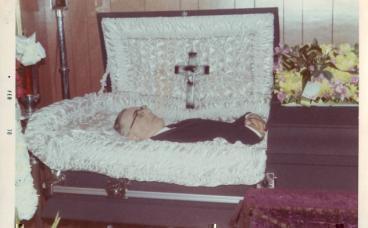
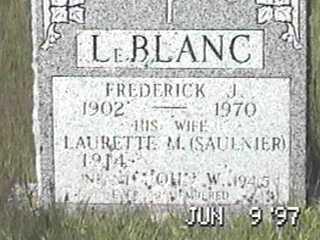
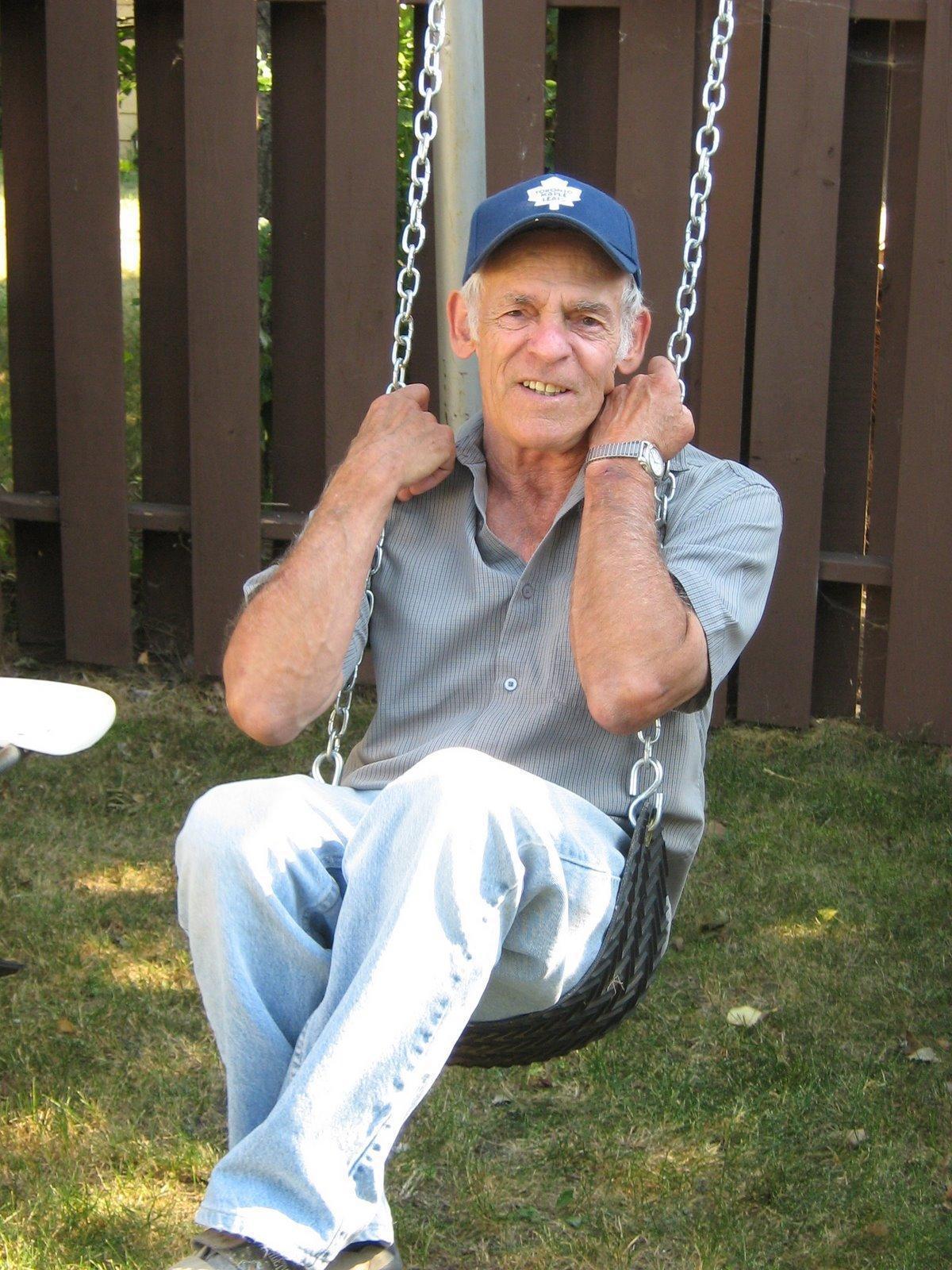
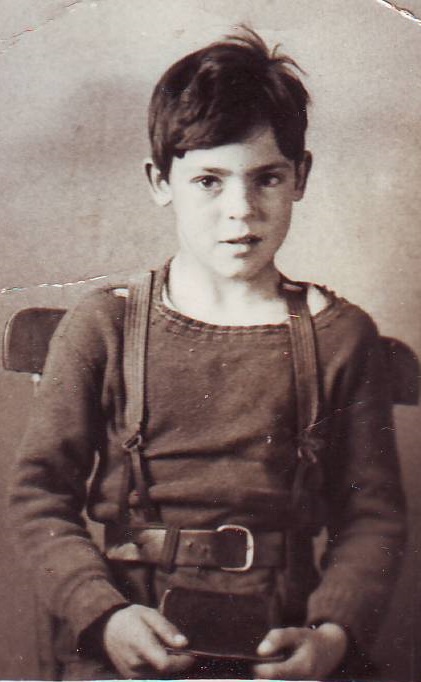
![Joe briefly talks about himself [click to see larger image]](rc_images/joe_leblanc_talks_about_himself_a1.jpg)
